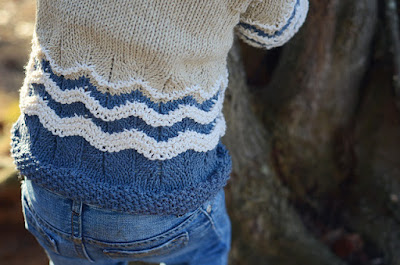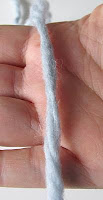This design was inspired by my family’s love of the ocean and beach and comes in sizes 2T [4, 6, 8, 10, 12] (shown in size 4).
With the simple chevron pattern and its white garter stitch rows I’ve tried to capture the waves’ white foam when they break and roll up onto the beach.
The 3/4 sleeves and a generous seamless hood (well, there is a 3-needle bind-off at the top) make this a comfy sweater for outdoor play in the sandbox or, if you are lucky enough to live by a lake or beach, at the playa.
The sweater is knit in the round from the bottom up to the armholes. Then the work is split into fronts and back and worked flat.
The hoodie is worked from set aside sts and closed with a 3-needle bind off at the top.
The sleeves are worked in the round from the cuff to the shoulder and then sewn in.
The hoodie band is worked flat by picking up stitches along the front edges.
Because this hoodie is for the rough and tumble play of kids, I chose to go with a hardy yarn by Red Heart: Eco-Cotton Blend, made of 75% recycled cotton (fabric remnants from t-shirts fabrication), 25% acrylic; a medium weight (#4, worsted) yarn.
If you would like to knit this hoodie, head over to Petite Purls for the free White Caps pattern. Enjoy!
photo: Brandy Fortune
photo: Brandy Fortune
photo: Brandy Fortune
The sweater is knit in the round from the bottom up to the armholes. Then the work is split into fronts and back and worked flat.
The hoodie is worked from set aside sts and closed with a 3-needle bind off at the top.
The sleeves are worked in the round from the cuff to the shoulder and then sewn in.
The hoodie band is worked flat by picking up stitches along the front edges.
Because this hoodie is for the rough and tumble play of kids, I chose to go with a hardy yarn by Red Heart: Eco-Cotton Blend, made of 75% recycled cotton (fabric remnants from t-shirts fabrication), 25% acrylic; a medium weight (#4, worsted) yarn.
If you would like to knit this hoodie, head over to Petite Purls for the free White Caps pattern. Enjoy!



















